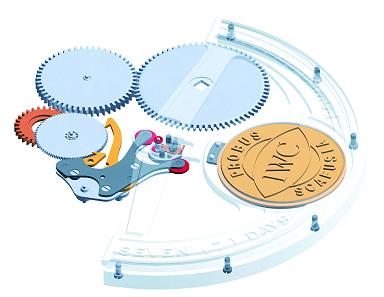
Review: The IWC Pellaton Automatic Winding System 5:1 Model
by
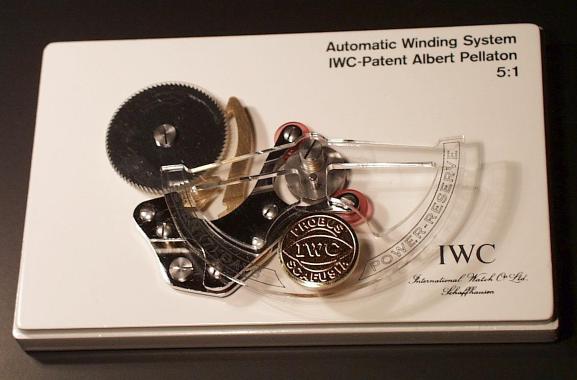 Click image to enlarge
I first learned of the existence of this little toy when I was browsing through the IWC website a couple of months ago. Then, about two weeks ago, I visited the site again, and there was a link to the toy right on the main page, at which point and I decided that the "taunting" had to stop...so I ordered one. Approximately 10 days after I ordered it, the model arrived |
Small click does the winding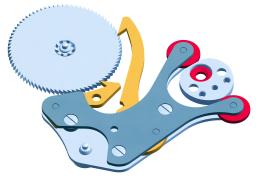 Click image to enlarge |
Great click does the winding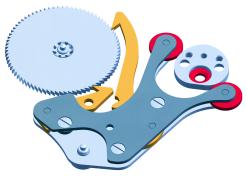 Click image to enlarge |
THE REVIEW
CaseUpon its arrival, an examination of the case showed numerous fine scratches and scuffs. Most are not noticeable under normal lighting contitions, but a few do stand out. I'm guessing that this is a job that would exceed the capabilities of even Judge Crater's toughest patch. The top surface of the acrylic cover is clear, while the four side surfaces are lightly frosted.
Dimensions of the model (with top cover on) are as follows: Length (front to back): 87.5 mm; Width (side to side): 138.0 mm; Height 43.5 mm including base.
The base is finished with a coat of white gloss paint. It's relatively evenly applied, and there only a few places where minor scratches (hairline) can be viewed. Many more imperfections which are not visible to the naked eye become visible under magnification.
To the naked eye, the printing is clear and well formed. As you can see by the picture below, however, magnification reveals something entirely different.

The bottom of the base is covered with a lovely piece of felt.
Movement
For those of you who don't like plastic parts in your watch movements, this model is not for you. The rotor, along with the two rollers that ride along the cam, are plastic. There is also a thin plastic disc covering the winding wheel. The remainder of the model is metal, although I am unsure of the type. I would guess that it is some sort of plated brass or similar material.
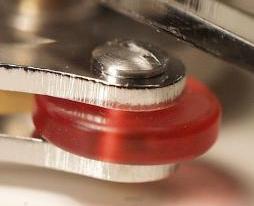
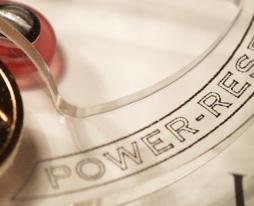
The one thing that bothers me about the model is the size of the rotor. Unless I'm miscalculating, the rotor itself is not consistent with the size of the remainder of the model, which is indicated to be a 5:1 scale as compared to the real movement. If the entire model was truly 5:1, then the rotor should be roughly 180 to 190 millimeters in diameter. The rotor in the model is only 78 millimeters in diameter. Apparently IWC shrunk the rotor in the model to keep the entire contraption to a more manageable size.
Rotor movement does actually wind the wheel on the model. Each full revolution of the rotor advances the wheel a total of 8 teeth. Four of the teeth are advanced by the major click, and four more are advanced by the minor click.
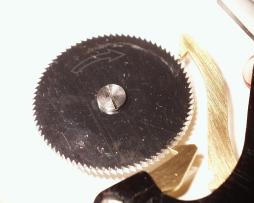
Overall, movement finishing is quite rough (by IWC's standards anyway). This is the sort of finish I'd expect on an Invicta or Poljot model. The major and minor clicks show considerable machining marks, and the other movement parts show a cursory surface polish. There is no Geneva striping, anglage, perlage, colimaconnage, and any other "-age" for that matter.
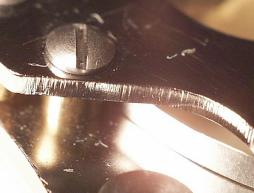
As you can see from the image below, a close look at the rotor printing indicates considerable irregularity. This is not really noticeable to the naked eye, however.
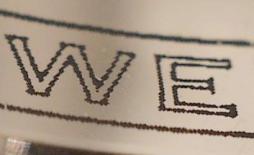
Overall Assessment
This is a very cool toy, and well worth the roughly $93.50 that is costs. Everyone who sees it wants to play with it. If I had the choice to make over again, I'd buy it in a heartbeat.
THE SPECIFICATIONS
| Case Composition: | Plastic - Type undetermined | |
| Cover Composition: | Plastic - Acrylic | |
| Case Size: | L: 87.5 mm W: 138.0 mm H: 43.5 mm including base | |
| Thickness of Base: | 12.3 millimeters | |
| Movement Height: | 11.7 millimeters | |
| Parts: | Approximately 50 (to be verified upon disassembly) |
THE IMAGES
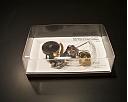
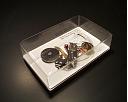
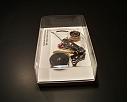
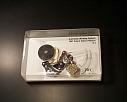
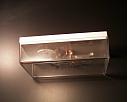
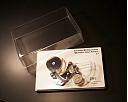
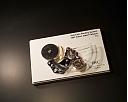
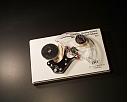
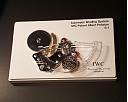
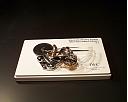
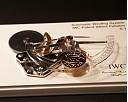
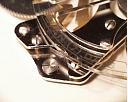
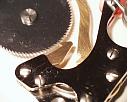
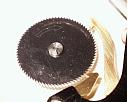
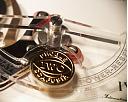

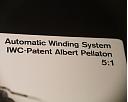
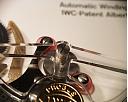
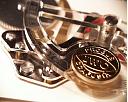
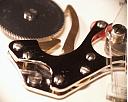
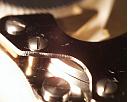
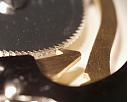
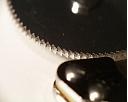
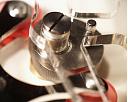
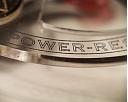
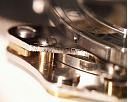
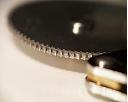
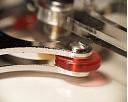
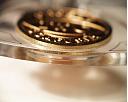
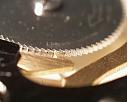
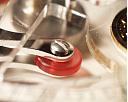
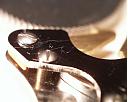
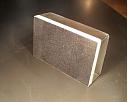
Credits:
Data on the Pellaton Winding System from the IWC website at http://www.iwc.ch.
All Rights Reserved

Back to top of page |
Return to Time Zone
Home Page
Copyright © 2001-2004 A Bid Of Time, Inc., All Rights Reserved
E-mail: info@TimeZone.com
